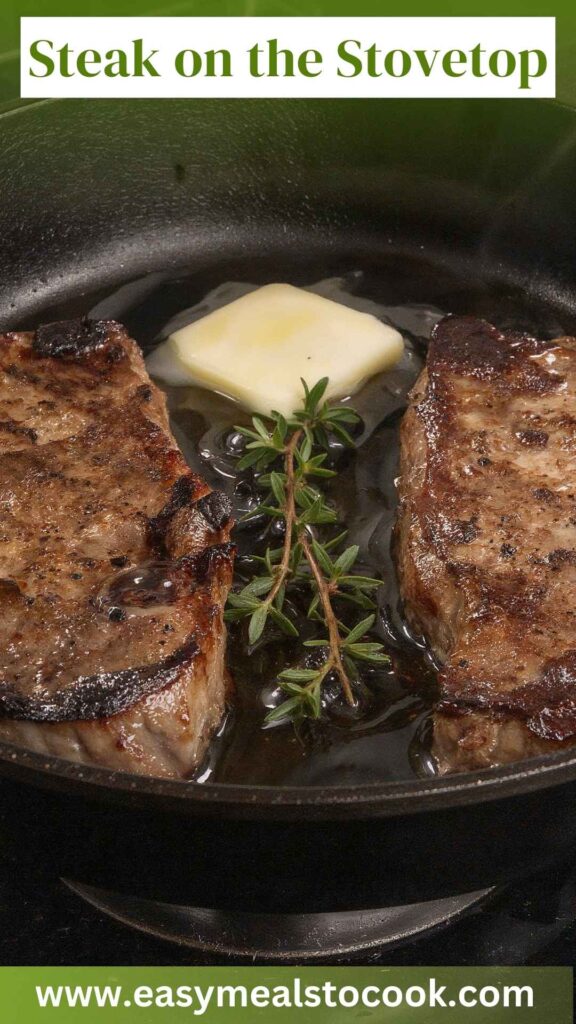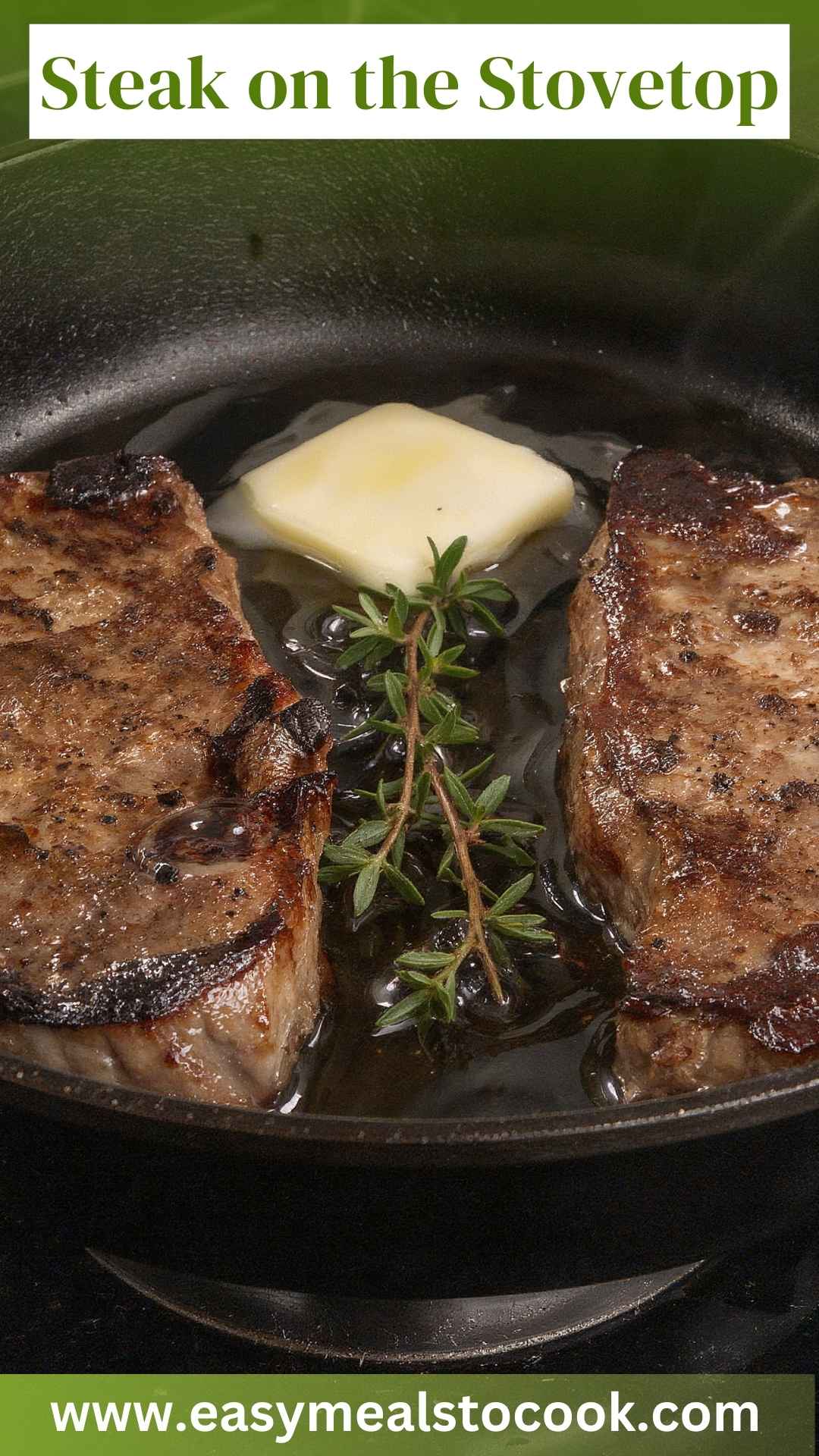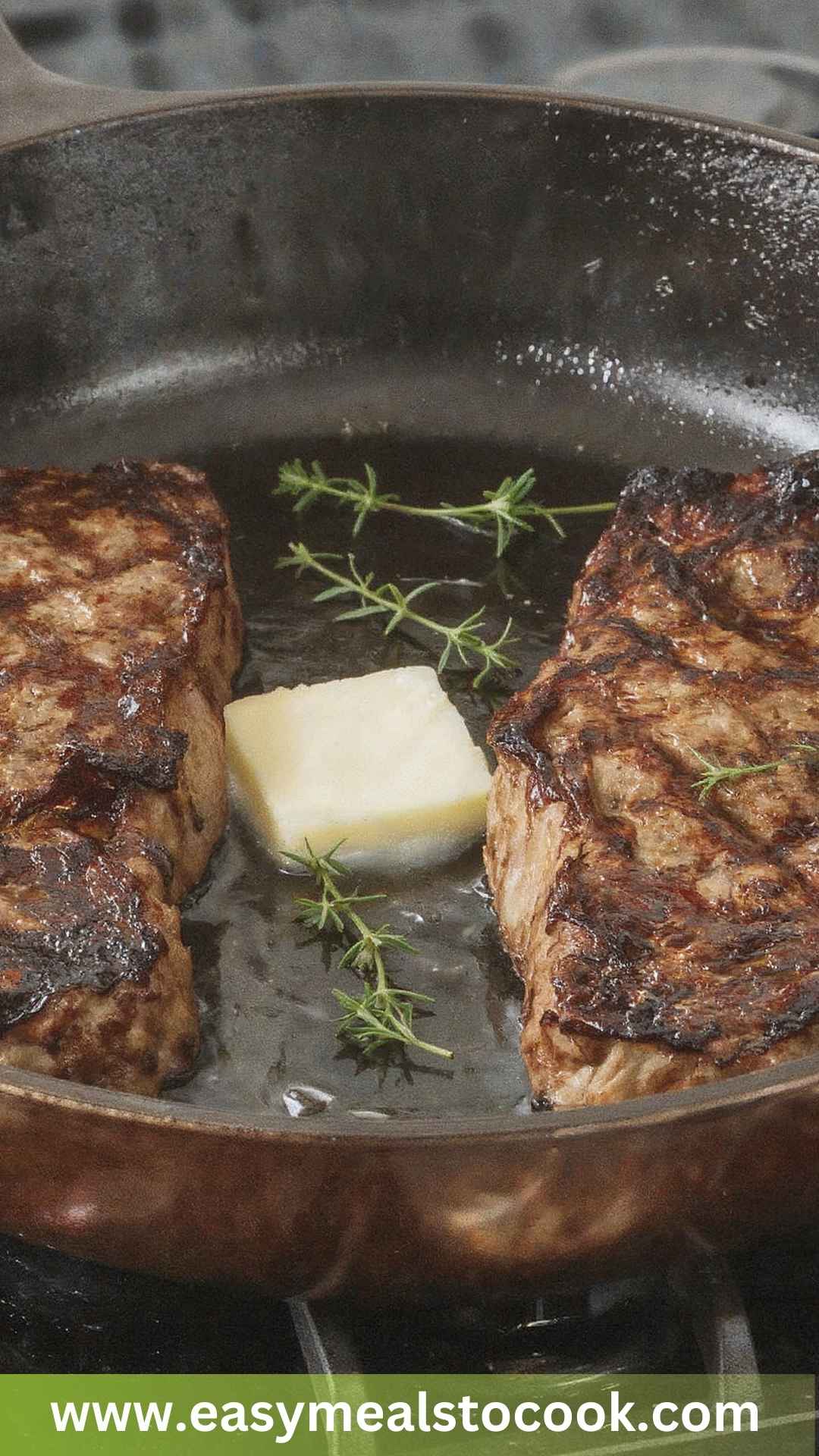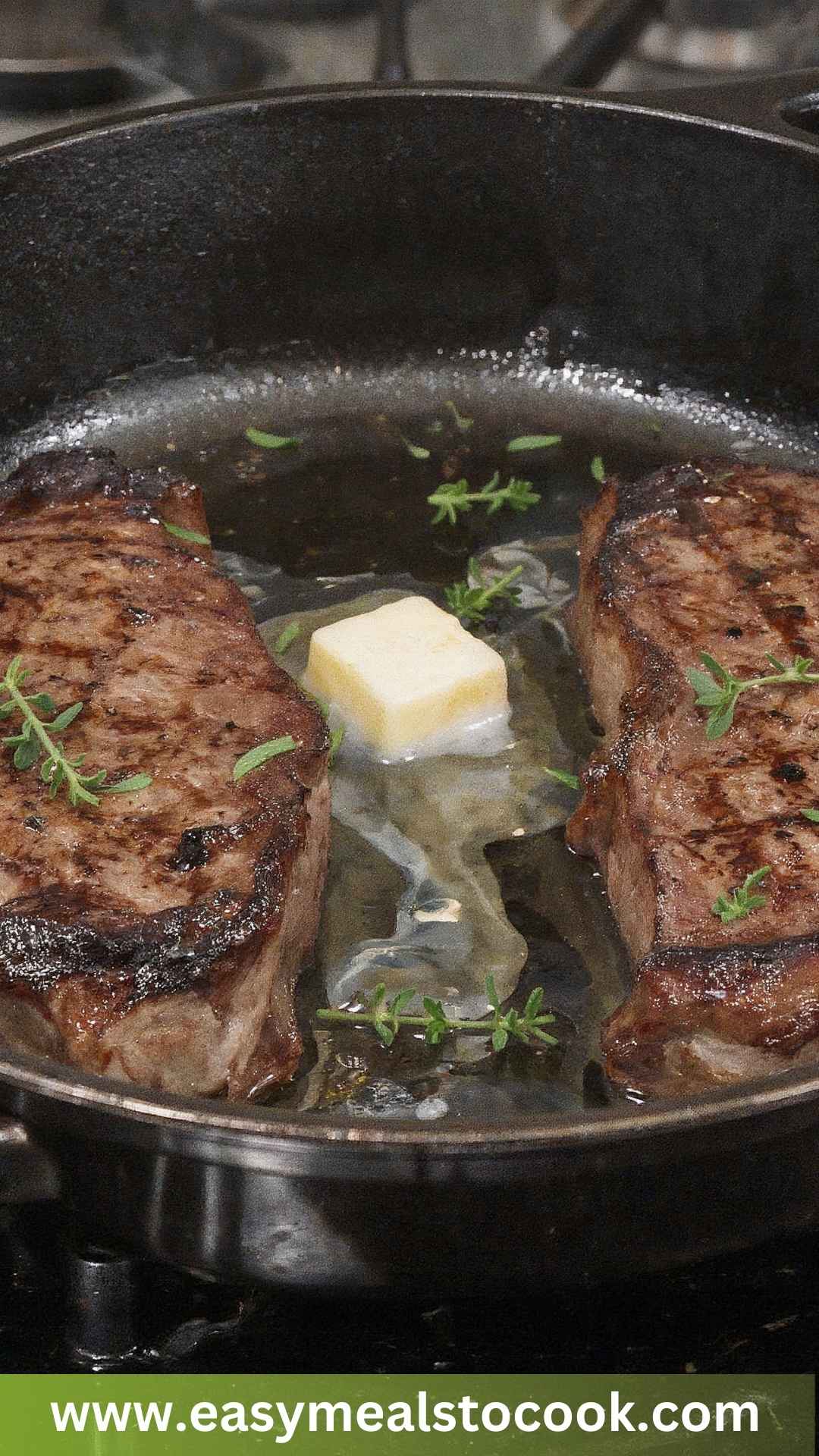Nutrition Facts
Servings 4
- Amount Per Serving
- Calories 250kcal
- % Daily Value *
- Total Fat 15g24%
- Protein 28g57%
* Percent Daily Values are based on a 2,000 calorie diet. Your daily value may be higher or lower depending on your calorie needs.

When it comes to enjoying a beautifully cooked steak, it can be quite tempting to default to the grill. However, cooking steak on the stovetop is a method that often gets overshadowed but can yield incredible results. It also opens the door to creativity in the kitchen, allowing you to pair this sumptuous dish with a variety of sides and features that elevate your meal.
Imagine this: a perfectly seared steak served alongside creamy mashed potatoes, seasonal roasted veggies, or a fresh arugula salad. It marries beautifully with a bold red wine or a refreshing craft beer. Picture that rich, beefy flavor, testosterone-fueled satisfaction, and the smell wafting through your kitchen. Yes, steak on the stovetop has its own charm.

Steak on the stovetop is the process of cooking a steak using a skillet on your range rather than an outdoor grill. This method allows for great control of cooking temperature and timing. With the right technique, you can achieve a mouth-watering crust while keeping the inside tender and juicy.
You don’t need fancy equipment; a simple skillet will do. Let's face it, cooking steak indoors can save you from inclement weather, and it's generally less hassle. No lighter fluid here, just straight-up deliciousness.
There’s something undeniably satisfying about cooking on the stovetop. As someone who enjoys whipping up meals, I've found it allows for creativity and spontaneity. First, it’s convenient. A quality skillet heats up quickly, so you can have a meal on the table in less than 30 minutes.
Moreover, there's a lot to love about how approachable and versatile stovetop steak can be. Adding various spices or herbs can tailor the flavor profile to your liking. It’s all about personalizing your dish.
Cooking this way also brings a certain intimacy to the process. The sizzle, the aroma, and even the occasional splatter become part of your culinary journey. You’re not just following a recipe; you’re crafting an experience.
As any seasoned home cook will tell you, there's an unmistakable joy in serving a well-cooked steak to friends or family. The compliments will roll in, and you’ll feel that rush of pride. Plus, experimenting with different cooking times can yield perfect results from medium-rare to well-done.

Begin by choosing the right steak. I love a good New York strip for its balance of flavor and tenderness. Let your steak rest at room temperature for about 30 minutes; this step ensures even cooking.
Generously season both sides of the steak with salt and pepper. Don't hold back; this creates a flavorful crust. If you like, add a hint of garlic powder or onion powder.
Place a heavy skillet (preferably cast iron) on the stovetop over medium-high heat. Wait for it to get hot, then add the neutral oil. You’ll know it's ready when the oil shimmers but doesn’t smoke.
Carefully place the steak in the skillet, laying it away from you to avoid splatter. You should hear a gratifying sizzle. Sear the steak for about 4-5 minutes without touching it.
Using tongs, flip the steak over. Add the butter and smashed garlic cloves into the skillet. As the butter melts, use a spoon to baste the steak with the pan juices. Repeat this for an additional 4-5 minutes for medium-rare. Adjust the cooking time based on your desired level of doneness.
In the final minute of cooking, add the fresh thyme to the butter-garlic mix and spoon it over the steak. This brings a fresh, aromatic flavor.
Once cooked, remove the steak from the skillet and let it rest on a cutting board for at least 5-10 minutes. This step is crucial as it allows the juices to redistribute.
Slice the steak against the grain and serve. Enjoy the beautiful cook you just executed!
If you have leftover steak – which is often rare – store it in an airtight container and refrigerate for up to 3 days. For longer storage, consider freezing the slices with a bit of olive oil to retain moisture. To reheat, avoid the microwave. Instead, warm it gently in a skillet set to low heat until it’s warmed through.
A typical serving of New York strip steak (about 3-4 ounces) has approximately:
Steaks are rich sources of protein, iron, and vitamin B12. Just remember to pair it with healthy sides to balance your meal.

Cooking steak on the stovetop is not just an alternative; it’s a delightful culinary experience. With the right ingredients and techniques, you can elevate this simple dish into a showstopper. Each bite brings comfort and satisfaction, whether it's a family gathering or a quiet dinner for one. With easy preparations and adaptable enhancements, anyone can enjoy a savory steak dinner anytime.
So lose those grill anxieties! The stovetop is your friend. Get ready to impress yourself and others with this uncomplicated, delicious dish. Happy cooking!
When it comes to enjoying a beautifully cooked steak, it can be quite tempting to default to the grill. However, cooking steak on the stovetop is a method that often gets overshadowed but can yield incredible results. It also opens the door to creativity in the kitchen, allowing you to pair this sumptuous dish with a variety of sides and features that elevate your meal.
Servings 4
* Percent Daily Values are based on a 2,000 calorie diet. Your daily value may be higher or lower depending on your calorie needs.